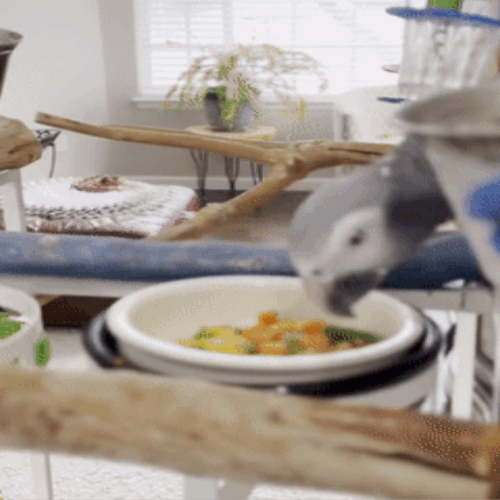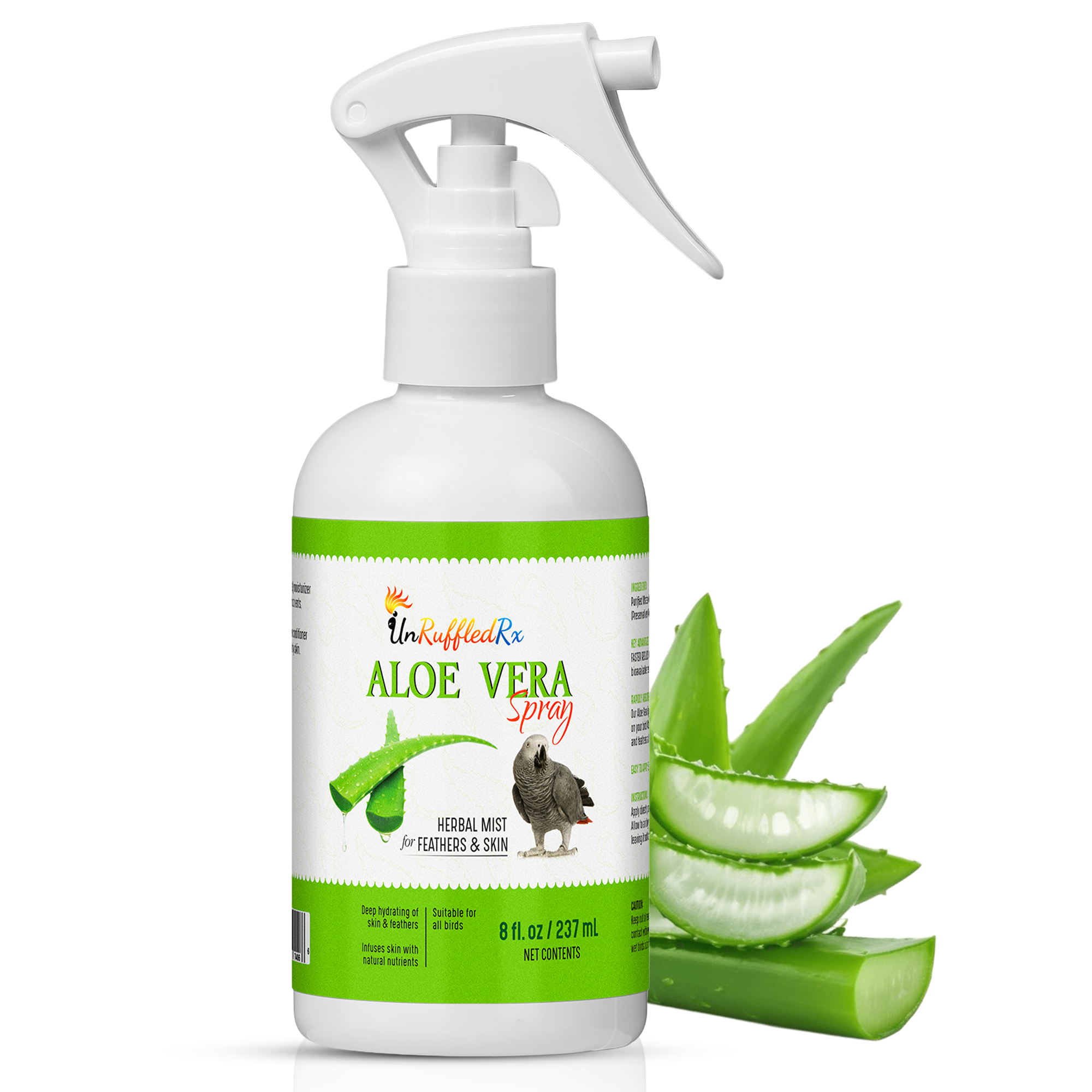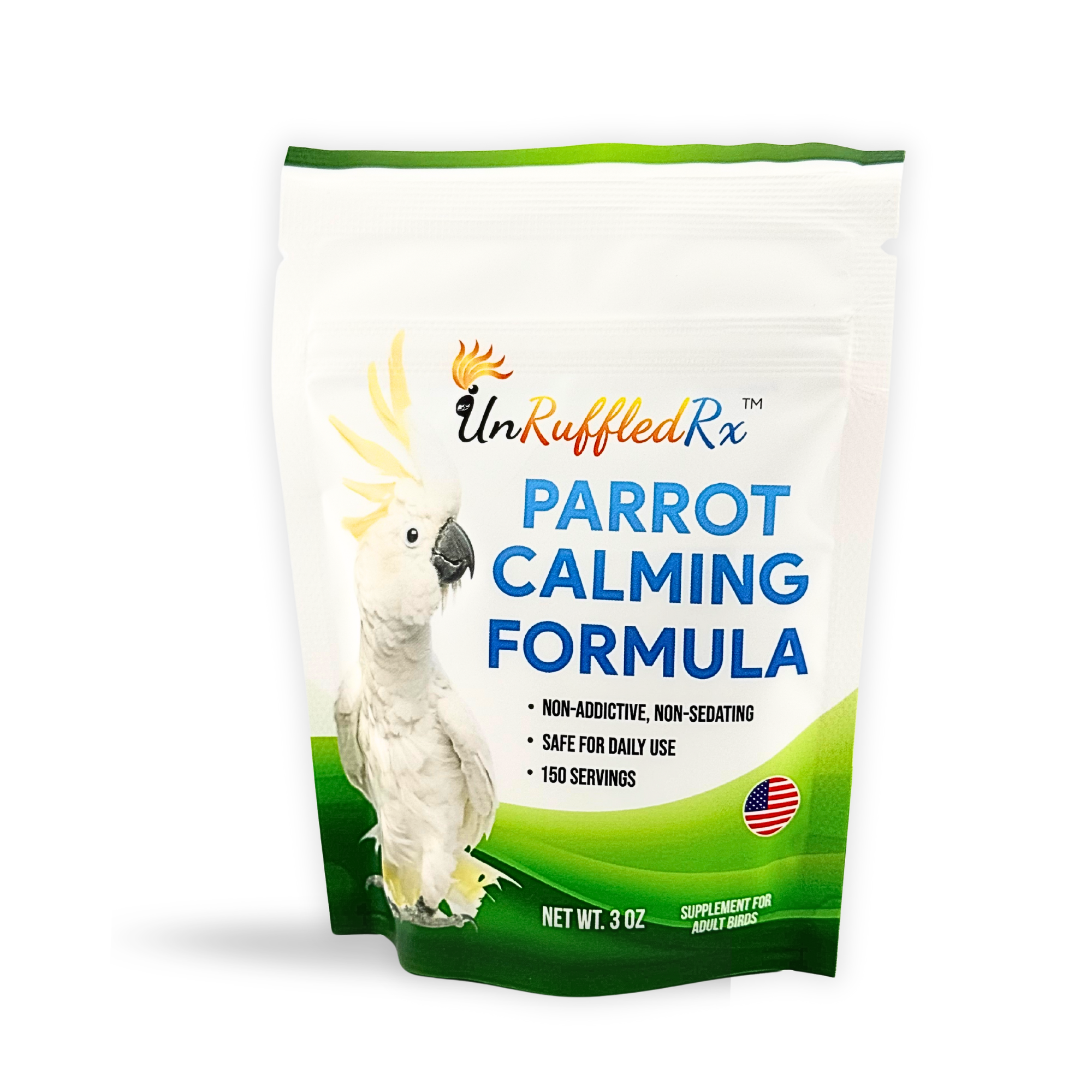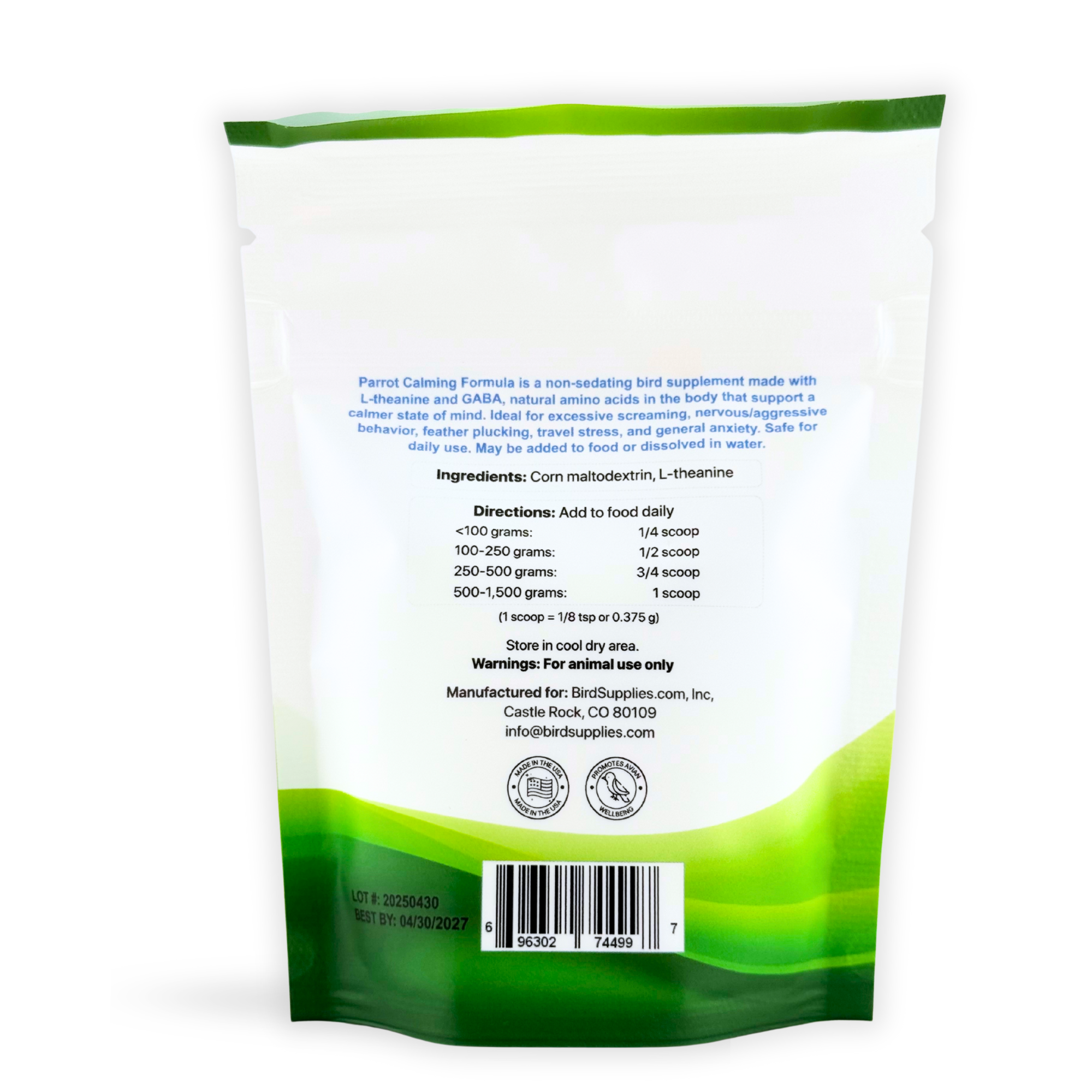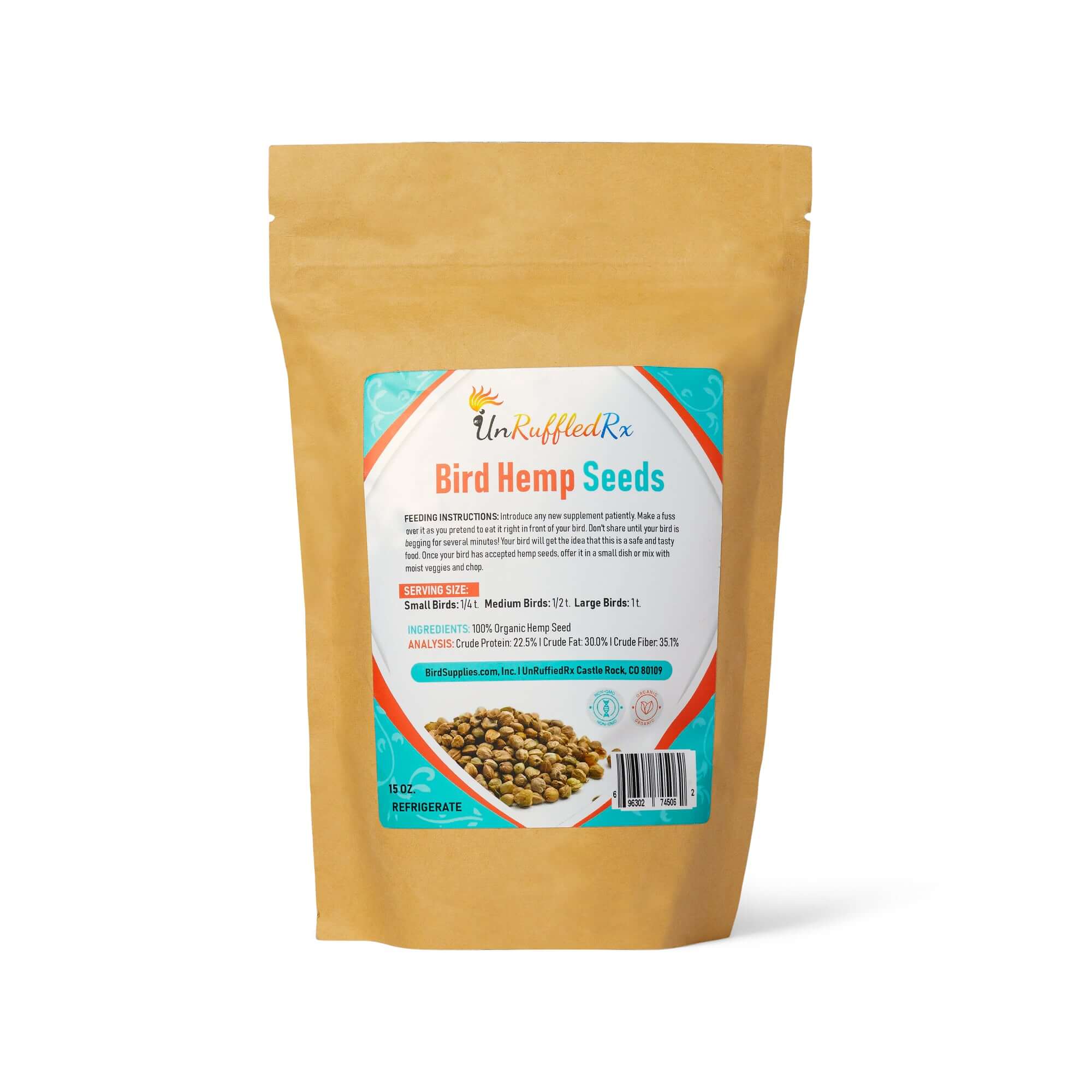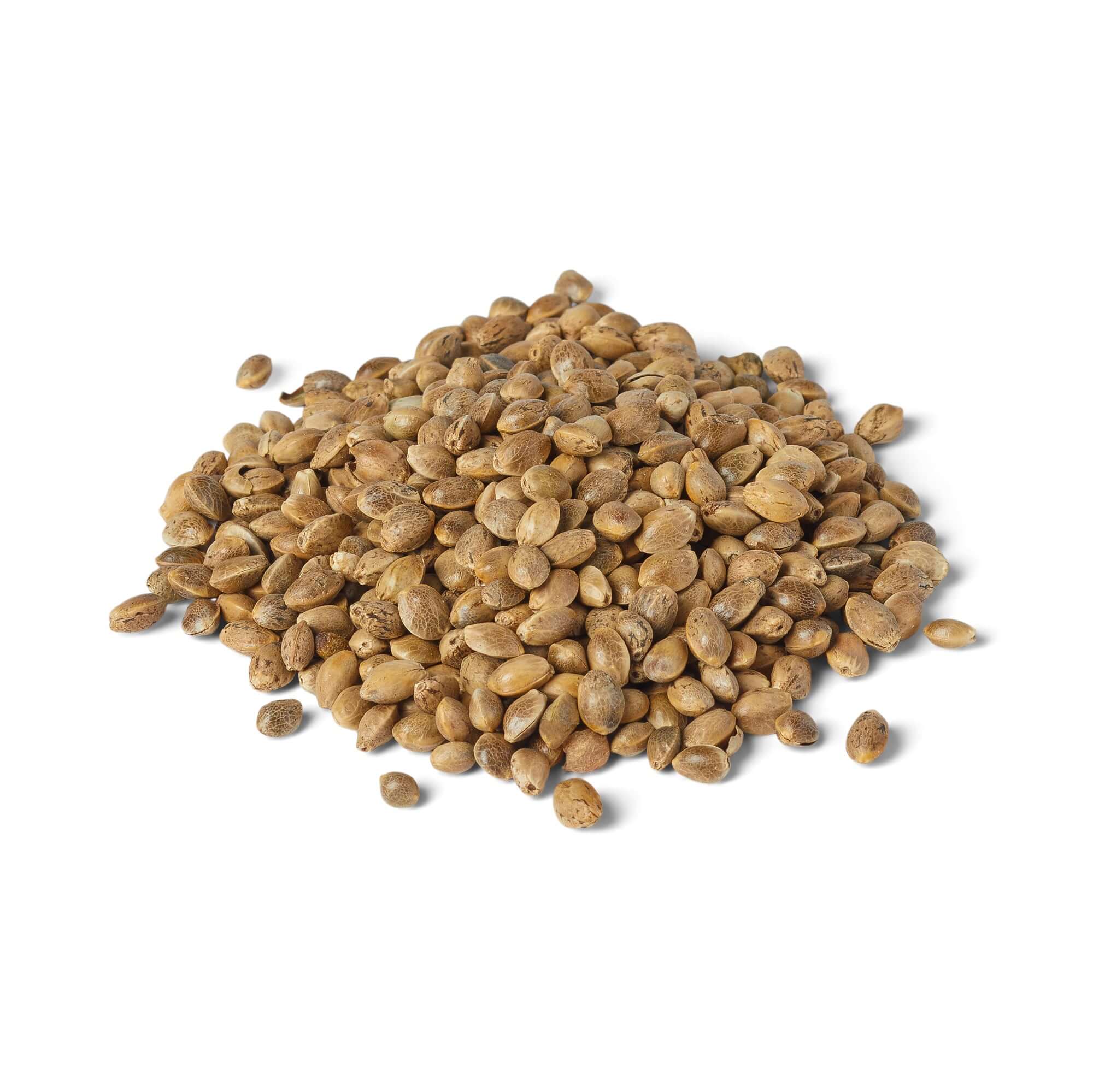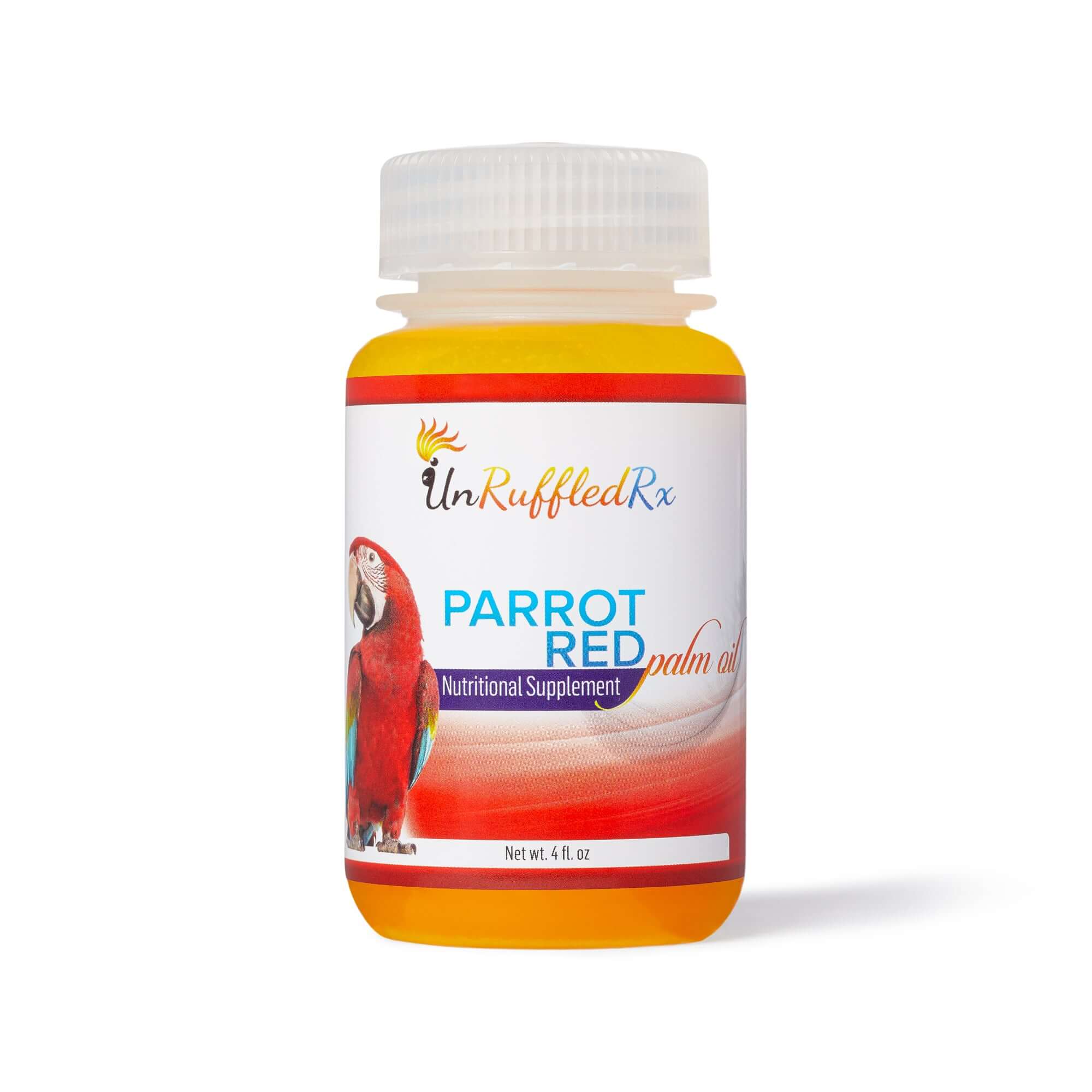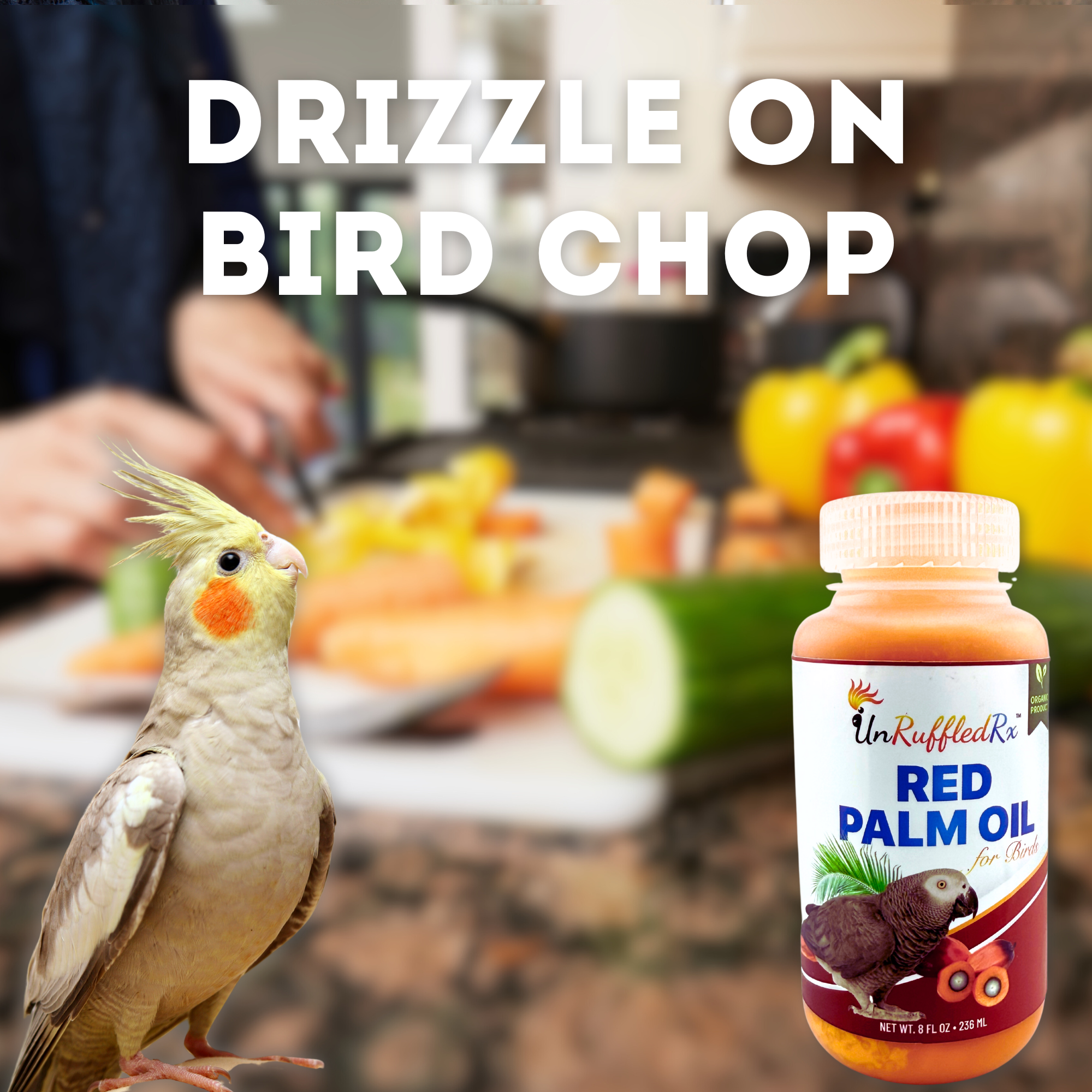- Understanding Bird Chop
- Essential Components of a Balanced Chop
- Preparing the Perfect Chop
- Customizing Chop for Different Birds
- Advanced Tips & FAQs
- Bird Chop Recipes
- Interactive: Rate Your Birds Chop Knowledge
- Submit Your Recipe!
Making bird chop is one of the easiest ways to keep your parrot healthy while giving them a fun, enriching mealtime. But not all chop is created equal—some mixes lack essential nutrients, while others get tossed on the floor because birds "just don’t like them!"
According to Dr. Jason Crean, a biologist and avian nutritionist, variety is key, and a well-balanced chop should include a mix of vegetables, grains, legumes, and herbs to mimic the diversity birds get in the wild. That's exactly where bird chop comes in!
Understanding Bird Chop
Bird chop is a finely chopped mix of fresh vegetables, fruits, grains, legumes, herbs, and spices, designed to give your parrot a balanced diet while preventing picky eating. I've found that the OXO Good Grips Vegetable Chopper makes preparing chop a breeze.
Unlike a bowl of seeds or processed pellets, chop mimics the variety birds would forage in the wild, offering essential nutrients that support their immune system, digestion, and feather health. The key is making sure the mix is colorful, fresh, and packed with foods that encourage natural foraging behavior.
If your parrot turns up their beak at fresh veggies, you’re not alone. Many birds are reinforced to eat only seeds or processed foods, which can make switching to a fresh diet feel like an uphill battle. The trick is to slowly introduce new vegetables, set up food modeling sessions, and highly reinforce any interest your bird shows in trying them.
I know this can feel overwhelming at first, which is exactly why I wrote a book breaking it all down into simple, actionable steps to help your bird transition to a fresh, healthy diet.
Essential Components of a Balanced Chop
Plant-based variety is the key to a thriving, healthy parrot - just like in the wild, where birds forage for a colorful mix of greens, fruits, grains, and seeds every day. The more textures and flavors you offer from natural, whole foods, the more nutrients your bird gets, and the less likely they are malnourished.
Vegetables For Birds
Here are 8 highly nutritious vegetables for birds that are widely available in U.S. supermarkets or can be homegrown, blanched, and frozen for bird chop:
- Kale – Packed with vitamins A, C, and K, plus calcium for strong bones.
- Carrots – Rich in beta-carotene, great for eye health and immune support.
- Broccoli – High in fiber, antioxidants, and vitamin C to boost immunity.
- Swiss Chard – Loaded with magnesium, iron, and antioxidants for feather health.
- Butternut Squash – A great source of vitamin A and fiber, excellent for digestion.
- Bell Peppers – Full of vitamin C and anti-inflammatory compounds to support overall health.
- Zucchini – Hydrating and easy to digest, with a good dose of vitamins and minerals.
- Green Beans – High in fiber and antioxidants, great for variety and gut health.
Fruits
Here are 6 highly nutritious fruits that are widely available in U.S. supermarkets or can be homegrown, chopped, and frozen for bird chop:
- Papaya – Loaded with digestive enzymes, vitamin A, and antioxidants.
- Blueberries – Packed with antioxidants and vitamin C to support immune health.
- Pomegranate – High in fiber, vitamin K, and anti-inflammatory compounds.
- Mango – A great source of vitamin A and natural sweetness for enrichment.
- Apples (no seeds) – Full of fiber and beneficial phytonutrients for digestion.
-
Cranberries – Low in sugar but high in antioxidants and gut-friendly compounds.

Grains, Seeds, Oils, and Legumes
Here are 8 highly nutritious grains and seeds that are great for bird chop and widely available in U.S. supermarkets:
Grains:
- Quinoa – A complete protein with all essential amino acids, plus fiber and iron.
- Brown Rice – Provides long-lasting energy, B vitamins, and essential minerals.
- Barley – High in fiber and promotes digestive health while providing antioxidants.
- Millet – Easy to digest, rich in magnesium, and a great source of B vitamins.
- Oats – Nutrient-dense, high in fiber, and supports digestive health.
- Buckwheat – Gluten-free, high in antioxidants, and packed with essential minerals.
- Amaranth – A complete protein source with calcium, iron, and fiber for overall health.
- Kamut – Ancient whole grain rich in protein, selenium, and fiber for sustained energy.

Seeds:
- Chia Seeds – High in omega-3s, fiber, and antioxidants for heart and brain health.
- Flax Seeds – Excellent source of omega-3 fatty acids, supports skin and feather health.
- Hemp Seeds – Packed with protein, omega fatty acids, and essential minerals.
- Sesame Seeds – Rich in calcium, magnesium, and beneficial antioxidants.
- Pumpkin Seeds – Great source of zinc, protein, and healthy fats for immune support.
- Sunflower Seeds – Nutrient-dense, high in vitamin E, but best fed in moderation.
- Niger Seeds – Small but nutrient-rich, great for finches and other small birds.
- Milk Thistle Seeds – Supports liver health and detoxification in birds.
Check out our Avian Naturals offerings here:
Legumes:
Legumes are a powerhouse of plant-based protein, fiber, and essential nutrients like iron, folate, and B vitamins, making them a valuable addition to your bird’s diet. However, they must be properly prepared to ensure safety. Bird-safe legumes include lentils, chickpeas, mung beans, adzuki beans, black beans, and split peas. Always soak and cook beans thoroughly to remove natural anti-nutrients like lectins, which can be toxic if consumed raw or undercooked.
Lentils and mung beans are great because they cook quickly and are easier to digest. Adding small portions of well-cooked legumes to your bird’s chop can help support muscle development, sustained energy, and overall health. Since legumes are dense in nutrients, they should be served in moderation as part of a balanced diet. Rotating different types of legumes in your bird’s meals ensures variety while providing essential amino acids that support overall wellness.
Herbs and Spices
Here are 8 highly nutritious herbs and spices that support joint health, relaxation, and overall wellness for birds—many of which are found in Joint Relief, Bird Greens, and SereniTea blends:
Herbs:
- Chamomile – Calming and anti-inflammatory, great for relaxation and digestion.
- Lemon Balm – Supports a healthy nervous system and helps reduce anxiety.
- Raspberry Leaf – Rich in antioxidants, supports immune health and digestion.
- Nettle – High in vitamins A and C, calcium, and iron, great for feather and bone health.
- Alfalfa – Packed with vitamins, minerals, and antioxidants, supports digestion and overall health.
- Red Clover Flower – High in phytonutrients, supports immune health and detoxification.
- Passion Flower – Natural calming properties that help reduce anxiety and stress.
- Lavender – Promotes relaxation, reduces stress, and has natural antibacterial properties.
- Dandelion Root – Supports liver health, digestion, and is high in vitamins A and K.
- Broccoli Leaves – Nutrient-dense with fiber, calcium, and essential vitamins for overall wellness.
Spices:
- Turmeric – Powerful anti-inflammatory, supports joint health and immune function.
- Ginger – Aids digestion, reduces inflammation, and promotes circulation.
- Ceylon Cinnamon – Supports blood sugar balance and has natural antimicrobial properties. (Please note that other forms of cinnamon are not bird safe)
- Cardamom – Supports digestion, has antimicrobial properties, and promotes respiratory health.
- Fennel Seed – Aids digestion, reduces bloating, and has natural anti-inflammatory effects.
- Cloves – Rich in antioxidants, supports immune function, and has antimicrobial properties.
- Black Pepper – Enhances nutrient absorption, supports digestion, and promotes circulation.
- Paprika – High in antioxidants, supports circulation, and adds a natural boost of vitamin A.
|
Surprising Vet Results: When I took Kiwi, my green cheek conure, to the vet after she flew into a window, I expected a routine check-up. But the vet was shocked—Kiwi’s feathers were so thick and healthy that they struggled to examine her for bruising! That’s the power of a nutrient-packed bird chop, and it’s proof that the right diet can make all the difference in feather health and overall well-being. |
Preparing the Perfect Bird Chop
Variety is everything when it comes to making the perfect bird chop. Birds don’t eat the same thing every day in the wild, and neither should they in your home! By changing up ingredients daily, you can prevent picky eating and make sure your bird gets all the good stuff—vitamins, minerals, and antioxidants—without getting bored.
Plus, a little variety keeps your parrot from giving you the stink-eye when you serve the same old thing!
In my mind’s eye, I’m shooting for a large variety of 20 or more foods, all cut into tiny, bite-sized pieces so that every single bite is a burst of nutrition. This means each meal is packed with different textures, flavors, and nutrients, ensuring my birds get a well-rounded diet with every beakful. A mix this diverse makes sure they’re not just eating, but truly thriving.
Step 1: Creating the Base
I start by making a base mix of fresh, organic vegetables and fruits, chopped into small, rice-sized pieces. This keeps birds from picking out just their favorites and makes sure they get a balanced meal. Some of my go-to base ingredients include:
- Dark leafy greens (kale, Swiss chard, dandelion greens)
- Crunchy vegetables (carrots, bell peppers, zucchini, sweet potato)
- Hydrating veggies (cucumbers, celery, broccoli stems)
- Low-sugar fruits (papaya, blueberries, pomegranate, mango)
Step 2: Adding Chop Toppers
To keep things fun and nutritious, I switch up the mix daily with what I call “chop toppers”—pre-mixed add-ins that give an extra punch of flavor and health benefits. These include:
- Herbs & Bird Teas: Chamomile, lemon balm, alfalfa, raspberry leaf
- Healthy Seeds: Chia, flax, hemp, sesame
- Whole Grains: Quinoa, brown rice, barley, millet
- Nuts (in moderation): Walnuts, almonds, pistachios (raw, unsalted)
Step 3: Daily Rotations for Maximum Nutrition
No one likes eating the same thing every day—not even your bird! That’s why I mix things up daily. One day, I’ll add chamomile and chia seeds. The next, maybe some hemp seeds and turmeric. This rotation method keeps meals exciting while making sure your bird gets all the nutrients they need.
Step 4: Portioning & Storage
Feeding the right amount is just as important as feeding the right food! Small birds, like budgies and cockatiels, only need about 1 teaspoon of chop per meal, while larger birds, like Cockatoos and Macaws, can have a few tablespoons per serving.
To save time, I prepare my base mix in larger batches and store it in the fridge for up to 3 days. I also freeze extra portions in small containers or ice cube trays, thawing as needed. Each morning, I pull out a fresh serving and top it with that day’s chosen chop toppers—easy, fresh, and exciting for my birds!
Step 5: Best Feeding Times & Enrichment
Birds are at their hungriest in the morning, so I serve chop as their first meal of the day to make sure they get all their nutrients first thing. Later in the day, during their outdoor sunshine time, I stuff foraging toys with vegetables to make mealtime super enriching. It’s a win-win—they stay entertained, and I get to watch them happily shred their way through their healthy snacks!
By following this method, you can easily give your bird a nutrient-packed, fun, and flavorful diet—without spending all day in the kitchen. Plus, a happy bird with a full belly means fewer attitude problems. Now, that’s something to squawk about!
Customizing Chop for Different Birds
Not all birds eat the same way, so it's important to customize chop based on species, size, and dietary needs. Some birds need more energy, while others need lower-fat options. Here’s how I tweak my chop for different types of birds:
For Small Birds (Budgies, Cockatiels, Parrotlets)
- Use finer-chopped ingredients to match their small beaks.
- Include more millet and small seeds for energy.
- Offer leafy greens and soft veggies like cooked carrots and sweet potatoes.
For Medium Birds (Conures, Quakers, Senegals)
- Balance fresh vegetables, fruits, grains, and some healthy nuts.
- Provide a variety of textures to encourage natural foraging.
- Introduce herbs and spices like turmeric and cinnamon for added benefits.
For Large Birds (African Greys, Amazons, Macaws, Cockatoos)
- Include heartier grains like quinoa and barley for long-lasting energy.
- Offer nuts in moderation, especially for macaws who need higher fat intake.
- Incorporate tougher veggies like broccoli stems and bell peppers for beak exercise.
By tailoring chop to your bird’s needs, you can make sure they’re getting the best nutrition possible while keeping mealtime fun and engaging!
Advanced Tips & FAQs
How Do I Introduce New Ingredients?
Birds can be skeptical of new foods, so patience is key! Start by mixing a small amount of the new ingredient into their favorite foods. Offer it multiple times and in different ways—some birds prefer raw, while others like things lightly steamed. The key is repetition and positive reinforcement.
What If My Bird Refuses to Eat Chop?
Some birds are naturally hesitant to try new things, especially if they’ve been on a seed-heavy diet. Try food modeling—eat the veggies in front of them or make a big show of how delicious it is. Offering chop first thing in the morning when they’re hungriest can also encourage them to give it a try.
Can I Use Frozen or Dried Ingredients?
Absolutely! Freezing chop in small portions makes meal prep easy, and many birds enjoy the different textures of freeze-dried fruits, vegetables, and herbs. Just make sure dried options are unsweetened and free from additives.
How Often Should I Change Up the Chop Recipe?
Mixing things up keeps your bird engaged and ensures they’re getting a variety of nutrients. I like to rotate ingredients weekly and swap out a few items in each batch to keep things fresh and interesting.
Do I Need to Cook Anything?
Some foods, like sweet potatoes, lentils, and barley, are best cooked to improve digestibility. Others, like leafy greens and bell peppers, are more nutritious when served raw. A mix of cooked and raw ingredients provides the best balance.

Bird Chop Recipes
Birdie Super Boost Chop
This easy-to-make chop packs a serious nutritional punch while keeping things simple. A mix of fresh vegetables, grains, and powerful chop toppers ensures your bird gets a balanced diet in every bite.
Ingredients
Base Mix
- 1 cup finely chopped kale or dandelion greens
- ½ cup shredded carrots
- ½ cup chopped bell peppers (any color)
- ¼ cup cooked quinoa
- ¼ cup cooked sweet potatoes
- ¼ cup chopped zucchini
Chop Toppers (for an extra nutritional boost)
- Pinch of SereniTea (herbs for calming support)
- Pinch of Red Palm Oil (loaded with vitamin A and antioxidants)
- Pinch of Omega Glow (rich in omega fatty acids for skin and feathers)
- 1 teaspoon soaked Bird Sprouting Seeds (soaked 2+ hours)
- Pinch of turmeric (natural anti-inflammatory)
Instructions
- Wash all vegetables thoroughly and chop them into rice-sized pieces.
- Steam or lightly cook the quinoa and sweet potatoes, then allow them to cool.
- Mix all base ingredients together in a large bowl.
- Sprinkle in the chop toppers and mix well to distribute evenly.
- Serve fresh or store in portion-sized containers in the fridge for up to 3 days.
- For longer storage, freeze in ice cube trays and thaw as needed.
This Birdie Super Boost Chop is a delicious, well-rounded meal that keeps your parrot excited about food while supporting their overall health!
Winter Wellness Chop
Cold weather and dry indoor air can be tough on birds, affecting their skin, feathers, and respiratory health. This Winter Wellness Chop is designed to support hydration, feather condition, and immune function—while also helping prepare your bird for the upcoming spring molt and breeding season.
Ingredients
Base Mix (approx. 2 cups total)
- ¾ cup finely chopped bok choy or mustard greens
- ½ cup shredded butternut squash
- ¼ cup chopped red bell peppers
- ¼ cup cooked barley
- ¼ cup cooked lentils
- ¼ cup finely chopped broccoli florets
Chop Toppers (for an extra nutritional boost)
- Pinch of SereniTea (calming and respiratory-supporting herbs)
- Pinch of Hemp Seeds (protein and healthy fats for energy)
- Pinch of Coconut Oil (supports skin and feather health, natural anti-inflammatory)
- Pinch of OmegaGlow Fusion Seeds (high in omega-3s for feather quality)
- Pinch of Bee Pollen (immune-boosting and supports seasonal changes)
Instructions
- Wash all vegetables thoroughly and chop them into rice-sized pieces.
- Steam or lightly cook the barley and lentils, then allow them to cool.
- Mix all base ingredients together in a large bowl.
- Sprinkle in the chop toppers and mix well to distribute evenly.
- Serve fresh or store in portion-sized containers in the fridge for up to 3 days.
- For longer storage, freeze in ice cube trays and thaw as needed.
The Winter Wellness Chop provides seasonal support for your bird’s skin, feathers, and immune system, helping them stay vibrant and strong through winter and into spring.
Garden Fresh Forage Chop
For bird owners who love gardening or shopping at farmers markets, this Garden Fresh Forage Chop is packed with vibrant, seasonal produce. This recipe provides fresh vegetables, fruits, and herbs to support digestion, feather health, and overall well-being. Plus, it can be used as part of a foraging activity to keep your bird mentally and physically engaged.
Ingredients
Base Mix (approx. 2 cups total)
- ¾ cup freshly chopped Swiss chard or beet greens
- ½ cup shredded carrots
- ¼ cup chopped sugar snap peas
- ¼ cup cooked amaranth or quinoa
- ¼ cup chopped tomatoes (seeded)
- ¼ cup fresh herbs (basil, parsley, or cilantro)
Chop Toppers (for an extra nutritional boost)
- Pinch of SereniTea (herbs for stress relief and immune support)
- Pinch of Omega Glow (rich in omega fatty acids for skin and feathers)
- Pinch of Chopped Almonds (healthy fats and vitamin E for feather health)
- Pinch of soaked Hemp Seeds (protein and omega-3s)
- Pinch of Dried Calendula Petals (supports skin and digestion)
- 1 tsp Red Palm Oil (antioxidants and feather conditioning)
Instructions
- Harvest or wash all vegetables, fruits, and herbs thoroughly.
- Chop all ingredients into rice-sized pieces for easy eating.
- Steam or lightly cook the amaranth or quinoa, then allow it to cool.
- Mix all base ingredients together in a large bowl.
- Sprinkle in the chop toppers and mix well.
- Serve fresh or store in portion-sized containers in the fridge for up to 3 days.
- For longer storage, freeze in ice cube trays and thaw as needed.
Foraging Fun: How to Serve
Use this Garden Fresh Forage Chop as an enrichment activity to engage your bird’s natural foraging instincts:
- Leaf Wrap: Spoon chop into a large collard green or Swiss chard leaf, roll it up, and let your bird shred it open.
- Foraging Skewer: Thread chunks of leafy greens, snap peas, and carrot slices onto a bird-safe skewer.
- Hidden Treasure: Stuff chop into a bird-safe toy or small cardboard cup to encourage problem-solving.
The Garden Fresh Forage Chop is a delicious way to keep your bird entertained, nourished, and connected to the natural world!
Interactive: Rate Your Birds Chop Knowledge
Take our fun quiz to see how balanced your bird’s chop is! Receive personalized tips to improve their diet.
Rate Your Chop Quiz
In Conclusion...
Creating a balanced, nutritious chop is one of the best ways to support your bird’s overall health, but let’s be real—it takes time and effort to source, chop, and prepare fresh, high-quality ingredients every day. That’s where Avian Naturals comes in! With premium, bird-safe ingredients like SereniTea for stress relief, Omega Glow for feather health, and Red Palm Oil for essential vitamins, you can instantly boost your chop’s nutritional power without the extra prep work.
Whether you're looking to enhance your bird’s diet with omega-rich seeds, powerful herbs, or immune-boosting superfoods, Avian Naturals makes it easy to provide variety and balance in every meal. Plus, our blends are designed to complement your homemade chop recipes perfectly—saving you time while ensuring your bird gets all the nutrients they need.
Related Posts:
Three Problems with an All Seed Bird Diet for Parrots
Signs of Bird Malnutrition and How To Fix Your Birds Diet
References:
Omega Fatty Acids: Getting the right balance
The difference between Omega 3 and Omega 6
Diet and behavior in companion birds
Ford, S. L., (2009) Balancing Your Parrot’s Lifestyle. VeterinaryPartner.com.
https://ezinearticles.com/?Essential-Fatty-Acids-for-Parrots&id=62021
Is ultra-processed foods aging our pets?
Link to this blog
Burroughs, D. (2025, February 6). How to make healthy bird chop your parrot will actually eat. BirdSupplies.com. https://birdsupplies.com/blogs/news/how-to-make-bird-chop-your-parrot-will-actually-eat
Diane Burroughs, LCSW, is a licensed psychotherapist specializing in avian anxiety disorders, nervous bird behaviors, and overall bird care. With training in ABA therapy and certification in Nutrition For Mental Health, Diane has authored several books on bird behavior and offers expert consultations for resolving issues like feather plucking and bird anxiety.
Her work has been featured in the Journal of Avian Medicine and Surgery and presented at Exoticscon. Diane also mediates the Feather Plucking Help group on Facebook, offering support to parrot owners. With over 30 years of experience, Diane has developed thousands of successful individualized behavior plans, promoting parrot wellness and excellent bird care.
TAGS: #BirdChop#BirdChopRecipe #VegetablesForBirds
SHARING IS CARING! 📣
Love what you read? Help spread the word on Facebook & Instagram 🌟
💬 Leave a comment below and let us know your thoughts!

